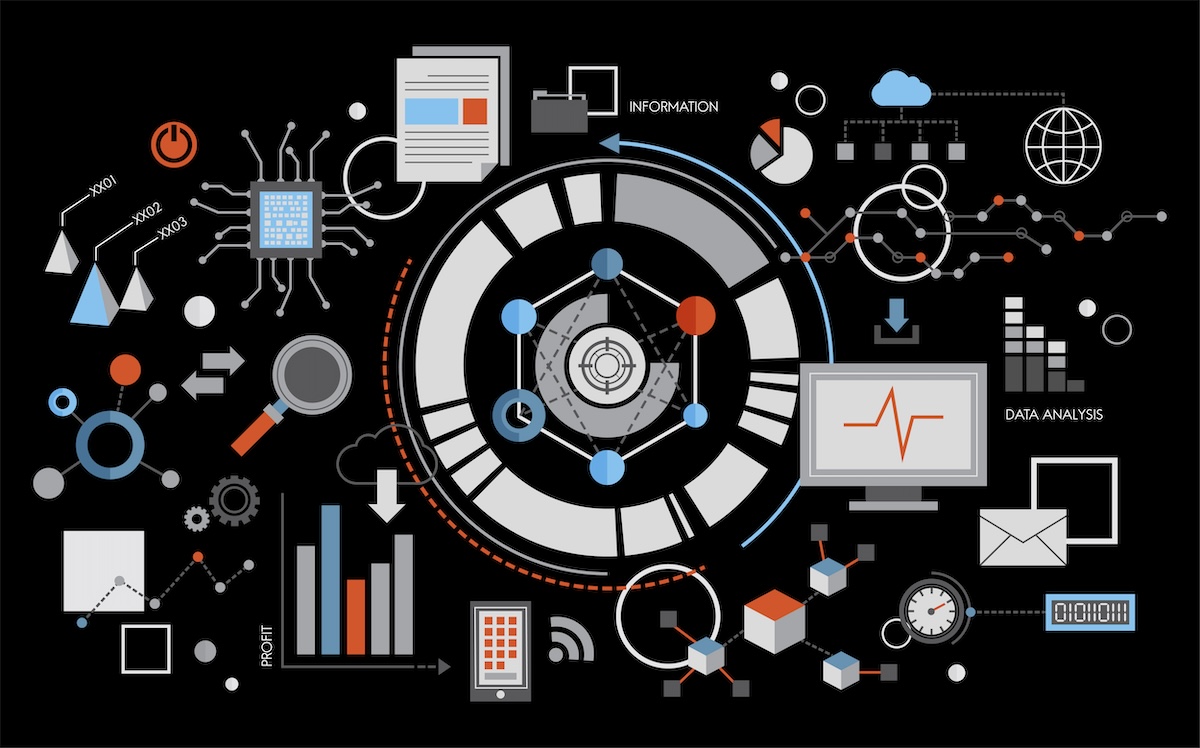Challenges & Solutions for the Aveva Licensing Model | SPONSORED
Licensing is a big part of using Aveva’s industrial software. But, like many powerful systems, it can be confusing and expensive. In this post, we’ll discuss the challenges of Aveva’s licensing model and why it can be tough for users.
We’ll start by discussing common issues, such as the expense and complexity. Next, we’ll present InfluxDB, an adaptable and reasonably priced option for time-series data management.
Before we conclude, we’ll offer advice on how InfluxDB can support cost control and scalability. So, if you’re struggling with Aveva’s licensing, this post is for you. Let’s jump in!
Problems with the Aveva licensing model
Aveva’s licensing model can be difficult for many businesses, particularly as they expand. With that in mind, below are some of the most typical issues firms have with Aveva’s licensing system.
Complex and Rigid Licensing Structure
Aveva’s licensing model can be tricky and rigid. You pay for each user and functionality on a tiered structure. This implies that businesses may need to purchase a whole module, such as the Aveva PI Asset Framework, for a single feature.
Licensing for Aveva’s historian is also complicated. Instead of charging based on the amount of data, it charges per industrial tag (unique signals). So, businesses pay for tags, even if they don’t collect large amounts of data. This setup makes it hard to change licenses when business needs shift.
High Costs for Scaling
Aveva’s licensing model can become expensive as businesses expand. The system charges per industrial tag, not based on how much data you use. This means you still have to pay for tags from machines no longer in use, even if they were decommissioned years ago. This is a big issue for organizations that frequently update or replace equipment in industries where regulations require them to store data for 10 years or more.
As businesses scale, they may also have to pay for more users or features, even if they don’t fully need them. Unfortunately, the model provides little flexibility for adjusting charges based on actual usage. This can cause businesses to overspend for licenses they do not use.
Next, we’ll look at how migrating to or offsetting Aveva with InfluxDB can address these difficulties and provide a better solution for managing industrial data.
Enhancing efficiency by migrating to or offsetting with InfluxDB
Businesses facing limitations with Aveva’s licensing model can benefit from migrating to or offsetting workloads with InfluxDB. InfluxDB is more flexible and cheaper, and it makes it easier to manage your data without relying so much on Aveva’s pricey licenses. Let’s explore.
Migrating Key Workloads to InfluxDB
Moving essential workloads to InfluxDB overcomes a great deal of challenges that businesses have with Aveva’s licensing model. InfluxDB offers pricing flexibility, which means an organization can scale based on their usage requirements and not arbitrary limits or quotas.
InfluxDB is also compatible with many types of industrial internet of things (IIoT) protocols, including MQTT and OPC UA, and it allows custom data streams. Telegraf is a free and open source tool that allows InfluxDB to integrate with 300 different protocols. Businesses can save money by adopting InfluxDB instead of pricey Aveva modules to manage time-series data.
Traditional process historians like the Aveva historian are mostly used to store data from factories and industrial sites. But they don’t have the latest tools or connections needed for things like advanced data analysis or smart devices, which are important for Industry 4.0.
InfluxDB integrates seamlessly into today’s data systems, making it simple to set up. It provides additional flexibility and allows developers and data scientists to choose the technologies that work best for them.
Traditional data historians are built for OT use cases and didn’t have IT users or the modern data ecosystem in mind when being developed. The result is that historians can become a bottleneck for Industry 4.0 workloads that require high-frequency data collection, standardized tooling, and long-term data retention. InfluxDB is built on industry standard technologies like Parquet, Arrow, Iceberg, and SQL, allowing it to integrate easily into any workflow.
By adopting open standards and the latest data technologies, businesses can avoid vendor lock-in and future-proof their systems. InfluxDB is compatible with many other tools, including SCADA systems and visualization tools such as Grafana. This makes it an excellent solution for businesses wishing to handle data without incurring the high fees and limitations of Aveva.
Using InfluxDB to Offset Aveva’s Limitations
Aveva’s licensing model has several disadvantages. InfluxDB may alleviate some of these issues for you. First and foremost, it offers the advantage of tracking data in real time without purchasing Aveva live-monitoring modules.
InfluxDB is flexible. You can either use it directly with Aveva tools or on its own for more advanced data analysis. This option allows you to choose whatever model fits best with your industrial settings and manage your data accordingly.
By using InfluxDB for data storage and analysis, you are less dependent on Aveva’s costly licenses. You pay for what you use, which cuts down on many unnecessary costs.
Now that we’ve seen how InfluxDB can help overcome some of the issues presented by Aveva’s licensing model, let’s look at the specific benefits InfluxDB delivers to IIoT environments and other data-intensive processes.
Advantages of InfluxDB for IIoT and data-intensive operations
InfluxDB offers significant benefits for IIoT and data-heavy workloads, such as cost savings, easier scaling, and modern integrations. These features help businesses stay flexible and ready for technology changes. Let’s explore these benefits in detail.
Cost Savings and Flexibility
Using InfluxDB for data-heavy tasks can help save costs and add flexibility. Unlike Aveva’s strict licensing model, InfluxDB allows you to scale data operations without paying for features you don’t need.
With InfluxDB, you pay only for what you use, avoiding overpaying for unused options. This flexibility is very useful, particularly in IIoT settings, where data requirements frequently change.
Moving data operations to InfluxDB not only saves money but also allows you more flexibility over data management, making it easy to adapt as industry requirements change.
Simplified Scaling
InfluxDB has made scaling data storage and monitoring a lot easier. Its flexible architecture allows companies to grow at any time, which rigid restrictions may put off.
Unlike Aveva’s licensing model, InfluxDB lets you adjust data capacity based on current needs, whether that’s automatic scaling in the cloud or adding nodes to your on-prem cluster. This flexibility is valuable for IIoT applications and, generally, applications with intensive data sets where requirements change quickly.
InfluxDB grows alongside businesses, maintaining performance while incurring no additional fees or cumbersome licensing. This approach facilitates expansion, lowers costs, and gives the flexibility that modern systems demand to manage massive data.
Future-Proofing With Modern Integrations
InfluxDB is easily integrated with newer technologies such as the cloud, IoT, and edge computing—it’s built to handle whatever’s next in IIoT growth.
With InfluxDB, businesses don’t need to worry about outgrowing their tech stack. It’s ready to adapt to modern data demands and connects easily with other essential tools. The flexibility allows frictionless scaling, maintaining business advantage as technology continues to evolve, and a business can adapt to new solutions quickly.
Businesses also avoid the risk of being locked into one vendor and can scale for new tech whenever they’re ready. In other words, InfluxDB is perfect for remaining future-ready.
Real-Time Analytics and Insights
InfluxDB offers real-time analytics, vital for fast decision-making in IIoT environments. It continuously collects and processes data, providing instant insights so businesses catch issues early and react quickly.
Its interface includes a data explorer with real-time graph visualization, allowing users to monitor trends and spot problems immediately. InfluxDB also provides numerous out of the box integrations with other data visualization tools and direct API access for customized integrations.
Choosing a flexible and cost-effective alternative to Aveva’s licensing model
In this post, we discussed why the Aveva licensing model might be challenging, particularly as a business grows. Its structure is rigid, so organizations frequently pay for things they don’t fully use.
InfluxDB is an excellent alternative. It is cost-effective and adaptable, with a “pay-for-what-you-use” model that enables businesses to grow their data storage without incurring excessive costs. Thanks to its support for real-time data and connections with well-known technologies, InfluxDB offers an advantage in today’s industrial environments.
If you’re looking for a smarter data solution, InfluxDB might be your answer to avoiding licensing limitations and staying prepared for future growth.
Sponsored by InfluxData
Related articles:



